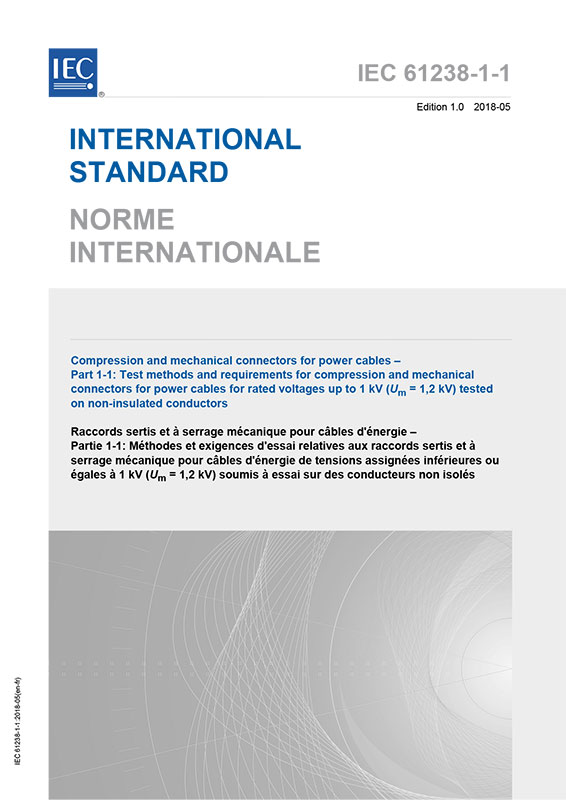IEC 61238-1-1:2018
Compression and mechanical connectors for power cables - Part 1-1: Test methods and requirements for compression and mechanical connectors for power cables for rated voltages up to 1 kV (Um = 1,2 kV) tested on non-insulated conductors
Circulation Date:
2018-05
Edition:
1.0
Language: EN-FR - bilingual english/french
Seitenzahl: 81 VDE Artno.: 246172
IEC 61238-1-1:2018 applies to compression and mechanical connectors for power cables for rated voltages up to 1 kV (Um = 1,2 kV), for example buried cables or cables installed in buildings, having
a) conductors complying with IEC 60228 having nominal cross-sectional areas between 2,5 mm2 and 1 200 mm2 for copper and between 16 mm2 and 1 200 mm2 for aluminium;
b) a maximum continuous conductor temperature not exceeding 90 °C.
This document is not applicable to connectors for overhead line conductors nor to connectors with a sliding contact.
The object of this document is to define the type test methods and requirements which apply to compression and mechanical connectors for power cables with copper or aluminium conductors. The reference method is to perform the tests on unused conductors.
This first edition, together with IEC 61238-1-2 and IEC 61238-1-3, cancels and replaces IEC 61238-1:2003.
This edition includes the following significant technical changes with respect to IEC 61238-1:2003:
a) The scope has been widened to cover connectors for copper conductors from 10 mm2 down to 2,5 mm2 and has been limited to 1 200 mm2 for connectors for copper and aluminium conductors because test experience and applications are rare for conductors of larger cross-sectional areas.
b) Two new mechanical classes have been introduced to satisfy the demand for connectors subjected to no mechanical force and for connectors subjected to higher mechanical forces than those specified in Class 1 for conductors of larger cross-sectional areas.
c) For the electrical test, a maximum elevated heating current has been set in order to avoid unrealistic current densities during testing which may change properties of tested connectors.
d) For the short-circuit test, the method of calculation and requirements have been updated.
e) For the mechanical test, the methods and requirements have been updated.


